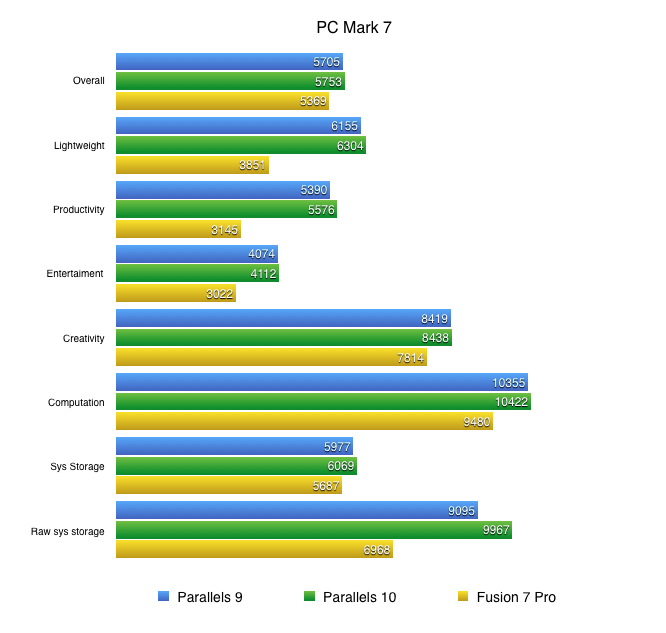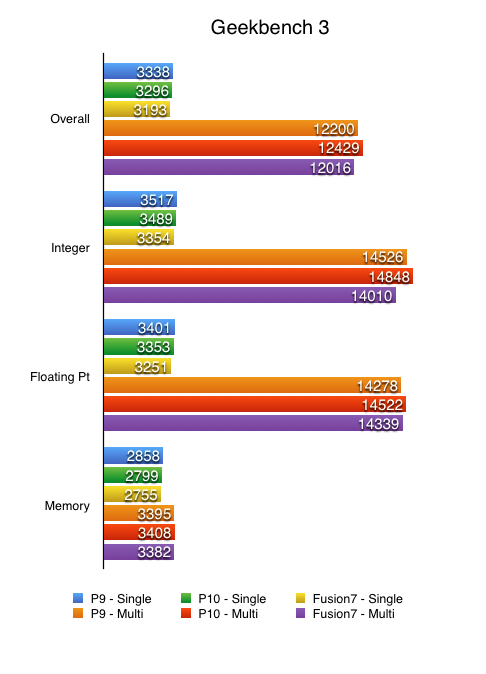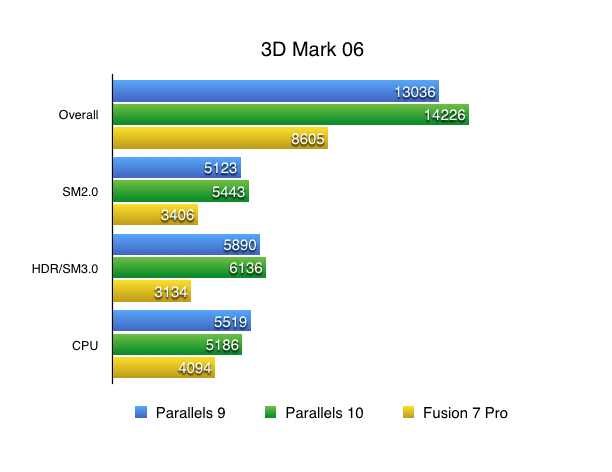VM Ware Fusion 7 vs Parallels Desktop 10 Performance
Published 13 September 2014.
Following the release of Parallels Desktop 10 late last month, VM Ware have recently released v7 of their popular Fusion software. I’ve been a regular and for the most part, happy user of Parallels but the ability to run and manage vSphere / ESXi clients remotely tempted me to take a look at Fusion 7 Pro.
I downloaded the trial version from here, converted my Parallels image into Fusion format and optimised/matched the settings as close as possible to those I use for Parallels. I was curious how VM Ware would compare to Parallels 10 given the small improvement they made this year and if they could close the performance gap.
I re-ran the same benchmarks on my 2013 15” Retina MBP (2.3Ghz i7, 16GB, 512GB SSD, Geforce 750M, Mavericks 10.9.4) as I used for the Parallels 9 vs 10 comparison I posted here. I dont have any comparative data on Fusion 6 at this time to include, sorry.
PC Mark 7
Futuremark’s PC Mark 7 provides Windows 7 and 8 benchmarking functionality using tests representative of a typical home users workload.

Geekbench 3
Primate Labs cross platform benchmark that separates single and multi threaded performance which attempt to simulate real-world scenarios.

3D Mark 06
Futuremark’s gaming benchmark supporting DirectX 9 Shader Model 3.0 effects and CPU tests using PhysX.

Conclusion
It appears that Parallels and VM Ware are starting to diverge in their approach to virtualisation. Parallels seem focused on outright performance showing small improvements from last years product and closer integration with the host Mac OS. VM Ware on the other hand don’t appear to have focused on performance nearly as much but have instead worked on introducing unique features in the form of vSphere & ESXi management.
I personally think VM Wares approach makes more sense as both platforms performance is already good enough for most users needs. Yes, Parallels has the edge in benchmarks but in most real world situations, it’s a small advantage. Those users requiring more power would be better served running VMs remotely on dedicated hardware and managing remotely through Fusion than waiting on small improvements from any Hypervisor optimisations.
The Gamers market will almost always favour Bootcamp because it provides native hardware performance and the inconvenience of requiring a reboot isn’t as big an issue for a gaming session as it might be for a developer and a traditional development workflow so neither package will likely win that group over.
I was intending to stick with Parallels 10 and pay the annual upgrade fee but I’ve decided instead to purchase VM Ware’s Fusion 7 Pro and experiment with some of the vSphere features.